The following article appeared in AIMPA magazine number 2 about the strength and testing of pilot ladders : There is much more information about pilot ladders in the AIMPA magazine, second issue, if you wish to read more you can download a copy at the bottom of this post.
Capt Troy is currently employed as a Pilot in NZ. He has immense interest in Pilot ladder testings, tug designs etc.. Work related interests include breaking stuff (testing pilot ladders), tug design and analysisof PPU data. keeping safety of pilots in mind , he likes to attempt to identify changes that may affect the safety of pilotage, vessel, environment, or related to individual pilots. Troy denied approval of printing his photo as wants his work to be valued more, shows the fineness of his nature and concern for his own work.
Strength
I hear people talk about strength of pilot ladders, they refer to the rules which state 24kN for the side rope material, the rules do not state a strength for pilot ladders it is the strength of the material for the side ropes.
You may think this means little, but…. A pilot ladder is proof tested to 8.8kN, that means that the load you should safely put on a pilot ladder in use will be less than 8.8kN.
But the strength of the side ropes is 24kN x 2 or is that 4? MNZ Part 53 says in a footnote “6 The minimum strength of the pilot ladder securing arrangement must take into account that side ropes are doubled.” To me that means 4x. In international rules it is pretty clear that the material of the sideropes is 24kN, MNZ Part 53 does not say how many kN.
SWL
Looking at safety factors, proof testing to determine a SWL for a pilot ladder with manila sideropes:
Manila rope SF of 12, 48kN = 4kN, 96kn = 8kN
What proof load is required, looking back I found pilot hoists had to have a overload test of 2.2, below is some of the text from the old MNZ Part 53.
The test load applied to Pilot ladders currently is 8.8kn. 8.8/2.2 = 4kN hmmmm. Perhaps this is the SWL of a pilot ladder.
Ok what weight does a pilot ladder have to carry? A pilot, itself…. A pilot 150kg to allow for wallet(with pilots licence in), radio, small bag (sorry Hugh), wet weather gear (may be fitted with pockets to carry PPU), PPE (Incl Covid-19 gear).
A 15m long pilot ladder weighs in at 100kg. Is 4kn or 407kg adequate? 250/407= 61% of the SWL But the side rope strength is 24kN x 4…
Tests have shown a doubled side rope to fail at ~44kN (single part failed at 24.5kN). Just doubling the rope does not give you double the strength, think bending.
Would having a SWL make a difference? I do not know, but perhaps it might mean that after a pilot boat snags a ladder it would have to be thoroughly inspected and tested?
Intermediate securing of a pilot ladder.
53.20 Testing of pilot hoist: A pilot hoist that is installed on a New Zealand ship on or after the date that Part 53comes into force must be subjected to an overload test of 2.2 times the working load.
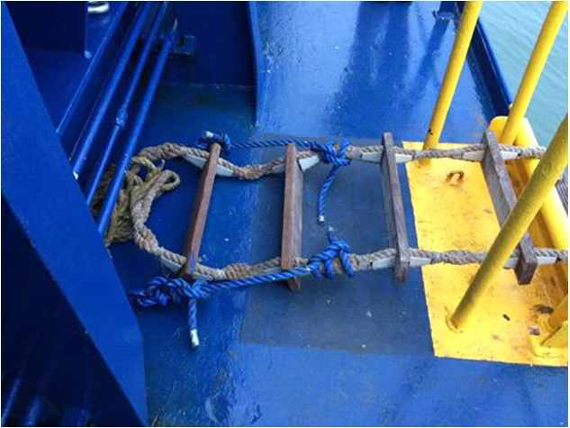
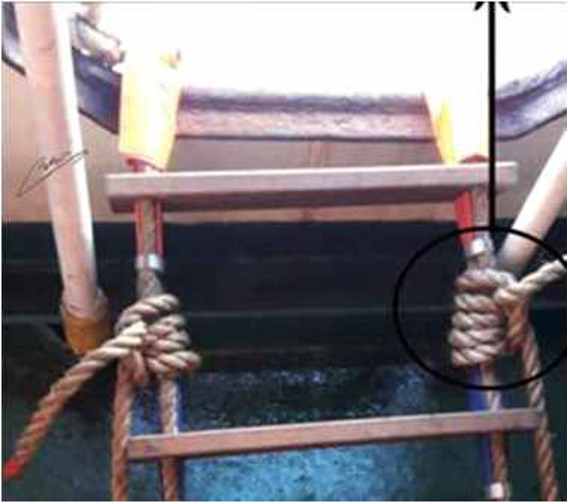
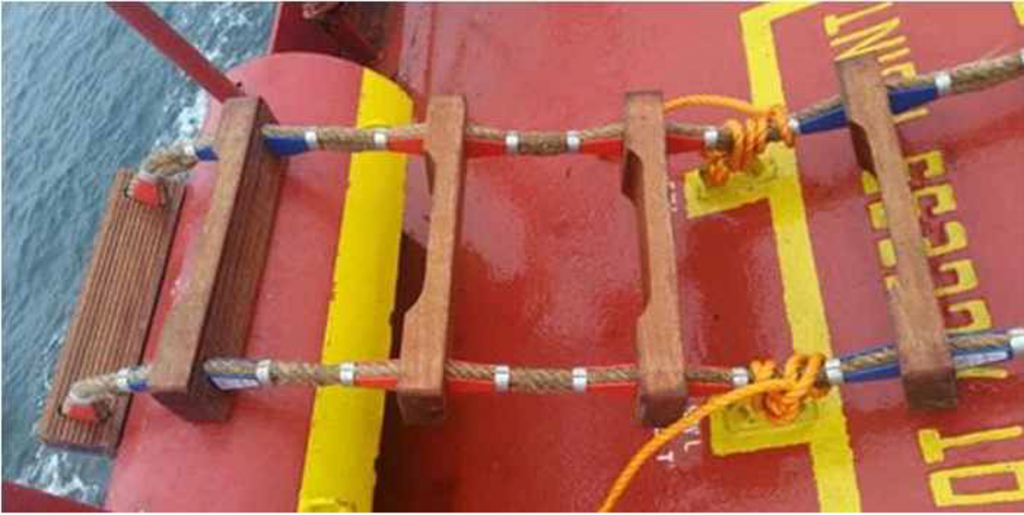
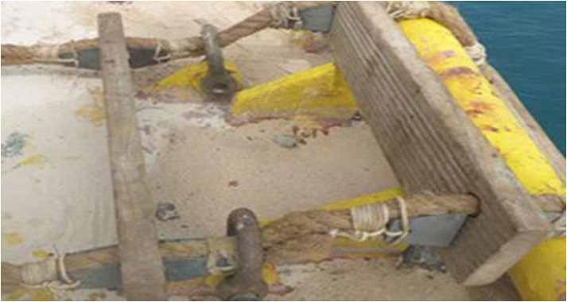
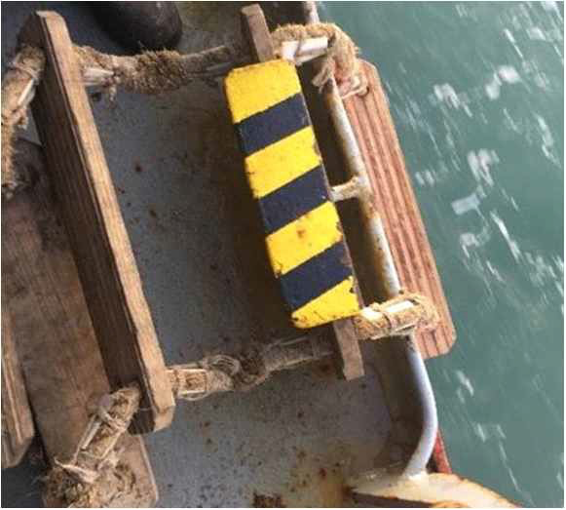
What I’ve discovered with testing:
Both shackles and lashings damage the side ropes, look in the images above all of them show distortion to the side ropes, and all the lashings are on the step fixtures, as is the shackle, the question is which does more…?
Early testing has found rolling hitch versus shackle to have about the same strength of holding before the pilot ladder side ropes failed – further testing needs to be carried out.
Pilot ladder actual strength after a bit of use (abuse) is a lot less than the “strength of the sideropes”.
I will continue with testing, a total of over 100 tests have been carried out, I expect to carry out another 100-200 test before a more formal report is published.
So shackles or rope lashings – testing is showing different shackles behave differently as do different size lashings so it is not as simple as it appears especially when you consider that one shipping company does not know one knot from another – it has sent a document out showing a photo with lashings – the knots are clove hitches.
I will refrain from stating my preference here.
Just remember a pilot ladder is only tested to 8.8kN (897kg) and has no SWL.
Troy

